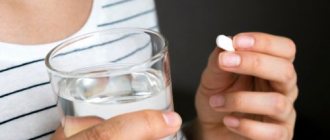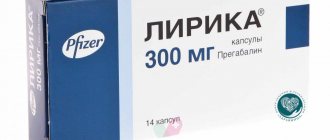Nosological classification (ICD-10)
- A41.9 Septicemia, unspecified
- A49.9 Bacterial infection, unspecified
- C95.0 Acute leukemia of unspecified cell type
- C95.9 Leukemia, unspecified
- D59 Acquired hemolytic anemia
- D69.3 Idiopathic thrombocytopenic purpura
- D70 Agranulocytosis
- E05.5 Thyroid crisis or coma
- E06 Thyroiditis
- E27.1 Primary adrenal insufficiency
- E27.2 Addison's crisis
- E83.5.0* Hypercalcemia
- G93.6 Cerebral edema
- J44 Other chronic obstructive pulmonary disease
- J45 Asthma
- J46 Status asthmaticus
- J98.8.0* Bronchospasm
- L30.9 Dermatitis, unspecified
- M13.9 Arthritis, unspecified
- M19.9 Arthrosis, unspecified
- M24.5 Joint contracture
- M35.9 Systemic connective tissue disorders, unspecified
- M65.9 Synovitis and tenosynovitis, unspecified
- M71.9 Bursopathy, unspecified
- M77.0 Medial epicondylitis
- M77.1 Lateral epicondylitis
- M79.0 Rheumatism, unspecified
- R57.9 Shock, unspecified
- T78.2 Anaphylactic shock, unspecified
- T78.4 Allergy, unspecified
Hydrocortisone
Interacts with specific cytoplasmic receptors (receptors for glucocorticosteroids (GCS) are found in all tissues, especially in the liver) to form a complex that induces the formation of proteins (including enzymes that regulate vital processes in cells).
Protein metabolism: reduces the amount of globulins in plasma, increases albumin synthesis in the liver and kidneys (with an increase in the albumin/globulin ratio), reduces synthesis and increases protein catabolism in muscle tissue.
Lipid metabolism: increases the synthesis of higher fatty acids and triglycerides, redistributes fat (fat accumulation occurs mainly in the shoulder girdle, face, abdomen), leads to developed hypercholesterolemia.
Carbohydrate metabolism: increases the absorption of carbohydrates from the gastrointestinal tract; increases the activity of glucose-6-phosphatase (increasing the flow of glucose from the liver into the blood); increases the activity of phosphoenolpyruvate carboxylase and the synthesis of aminotransferases (activation of gluconeogenesis); promotes the development of hyperglycemia. Water-electrolyte metabolism: retains Na+ and water in the body, stimulates the excretion of K+ (mineralocorticoid activity), reduces the absorption of Ca2+ from the gastrointestinal tract, causes “leaching” of calcium from the bones and increases its renal excretion, reduces bone mineralization.
The anti-inflammatory effect is associated with inhibition of the release of inflammatory mediators by zosinophils and mast cells; inducing the formation of lipocortins and reducing the number of mast cells that produce hyaluronic acid; with a decrease in capillary permeability; stabilization of cell membranes (especially lysosomal) and organelle membranes. Acts on all stages of the inflammatory process: inhibits the synthesis of prostaglandins (Pg) at the level of arachidonic acid (lipocortin inhibits phospholipase A2, suppresses the liberation of arachidonic acid and inhibits the biosynthesis of endoperoxides, leukotrienes, which contribute to the processes of inflammation, allergies, etc.), the synthesis of “pro-inflammatory cytokines" (interleukin 1, tumor necrosis factor alpha, etc.); increases the resistance of the cell membrane to the action of various damaging factors.
The immunosuppressive effect is caused by the involution of lymphoid tissue, inhibition of the proliferation of lymphocytes (especially T lymphocytes), suppression of the migration of B cells and the interaction of T and B lymphocytes, inhibition of the release of cytokines (interleukin-1, 2; interferon gamma) from lymphocytes and macrophages and decreased antibody formation.
The antiallergic effect develops as a result of a decrease in the synthesis and secretion of allergic mediators, inhibition of the release of histamine and other biologically active substances from sensitized mast cells and basophils, a decrease in the number of circulating basophils, T- and B-lymphocytes, mast cells, suppression of the development of lymphoid and connective tissue, decreased sensitivity of effector cells to mediators, allergies, inhibition of antibody formation, changes in the body's immune response.
In obstructive diseases of the respiratory tract, the effect is mainly due to inhibition of inflammatory processes, prevention or reduction of the severity of swelling of the mucous membranes, reduction of eosinophilic infiltration of the submucosal layer of the bronchial epithelium and deposition of circulating immune complexes in the bronchial mucosa, as well as inhibition of erosion and desquamation of the mucosa. Increases the sensitivity of beta-adrenergic receptors of small and medium-sized bronchi to endogenous catecholamines and exogenous sympathomimetics, reduces the viscosity of mucus by reducing its production.
Suppresses the synthesis and secretion of ACTH and, secondarily, the synthesis of endogenous corticosteroids. Inhibits connective tissue reactions during the inflammatory process and reduces the possibility of scar tissue formation.
Directions for use and doses
IM (deep) into the gluteal muscle at a dose of 50–300 mg to 1000–1500 mg/day. Before use, the contents of the ampoules must be shaken until a homogeneous suspension is formed.
For acute, life-threatening conditions, 100–150 mg is administered every 4 hours for 48 hours; then - every 8-12 hours. Children - every 4 hours 1-2 mg/kg, the optimal daily dose is 6-9 mg/kg.
5–25 mg (0.1–1 ml (depending on the size of the joint)) is injected into the joint cavity once a week. 3–5 injections per course. The effect of the drug begins 6–25 hours after administration and lasts several days or weeks
HYDROCORTISONE-RICHTER susp. d/injection 125 mg vial. 5 ml
Interaction
Hydrocortisone increases the toxicity of cardiac glycosides (due to the resulting hypokalemia, the risk of developing arrhythmias increases).
Accelerates the elimination of acetylsalicylic acid, reduces the content of its metabolites in the blood (with its abolition, the concentration of salicylates in the blood increases and the risk of side effects increases). When used simultaneously with live (attenuated) vaccines and against the background of other types of immunizations, it increases the risk of viral activation and the development of infections. Increases the metabolism of isoniazid, mexiletine (especially in “fast acetylators”), which leads to a decrease in their plasma concentrations. Increases the risk of developing the hepatotoxic effect of paracetamol (induction of “liver” enzymes and the formation of a toxic metabolite of paracetamol).
Hypokalemia caused by hydrocortisone may increase the severity and duration of muscle blockade due to muscle relaxants.
In high doses, it reduces the effect of somatropin.
Hydrocortisone reduces the effect of oral hypoglycemic drugs.
Strengthens the anticoagulant effect of coumarin derivatives.
Weakens the effect of vitamin D on calcium absorption in the intestinal lumen. Ketoconazole (reduces clearance) increases the toxicity of hydrocortisone.
Thiazide diuretics, carbonic anhydrase inhibitors, other glucocorticoids and amphotericin B increase the risk of hypokalemia, sodium-containing drugs - edema and increased blood pressure. Nonsteroidal anti-inflammatory drugs and ethanol increase the risk of ulceration of the gastrointestinal tract (GIT) mucosa and bleeding. In combination with non-steroidal anti-inflammatory drugs for the treatment of arthritis, it is possible to reduce the dose of hydrocortisone due to the additive therapeutic effect.
Indomethacin, displacing hydrocortisone from its connection with albumin, increases the risk of developing its side effects.
Amphotericin B and carbonic anhydrase inhibitors increase the risk of osteoporosis.
The therapeutic effect of hydrocortisone is reduced under the influence of phenytoin, barbiturates, ephedrine, theophylline, rifampicin and other inducers of “liver” microsomal enzymes (increased metabolic rate). Mitotane and other steroid synthesis inhibitors may necessitate an increase in the dose of hydrocortisone.
The clearance of hydrocortisone increases against the background of thyroid hormone preparations.
Immunosuppressants increase the risk of developing infections and lymphoma or other lymphoproliferative disorders associated with Epstein-Barr virus.
Estrogens (including oral estrogen-containing contraceptives) reduce the clearance of hydrocortisone, prolong T1/2 and their therapeutic and toxic effects. The appearance of hirsutism and acne is facilitated by the simultaneous use of hydrocortisone and steroid hormonal drugs - androgens, estrogens, anabolic steroids, oral contraceptives. Tricyclic antidepressants may increase the severity of depression caused by taking hydrocortisone (not indicated for the treatment of these side effects).
The risk of developing cataracts increases when used in conjunction with other glucocorticoids, antipsychotic drugs (neuroleptics), carbutamide and azathioprine.
Simultaneous administration with nitrates, m-anticholinergics (including antihistamines, tricyclic antidepressants) increases intraocular pressure.
Hydrocortisone 2.5% 2ml No. 10 ampoules
Trade name: Hydrocartisone
Release form: Suspension for intramuscular and intraarticular administration
Packaging: 10 ampoules of 2 ml.
Pharmacological action: Hydrocortisone has anti-inflammatory, desensitizing (preventing or inhibiting allergic reactions) and antiallergic effects, and has immunosuppressive (suppressing the body's defenses) activity. GKS. Suppresses the functions of leukocytes and tissue macrophages. Limits the migration of leukocytes to the area of inflammation. It disrupts the ability of macrophages to phagocytose, as well as to form interleukin-1. Helps stabilize lysosomal membranes, thereby reducing the concentration of proteolytic enzymes in the area of inflammation. Reduces capillary permeability due to the release of histamine. Suppresses fibroblast activity and collagen formation. Inhibits the activity of phospholipase A2, which leads to suppression of the synthesis of prostaglandins and leukotrienes. Suppresses the release of COX (mainly COX-2), which also helps to reduce the production of prostaglandins. Reduces the number of circulating lymphocytes (T- and B-cells), monocytes, eosinophils and basophils due to their movement from the vascular bed into the lymphoid tissue; suppresses the formation of antibodies. Hydrocortisone suppresses the release of ACTH and β-lipotropin by the pituitary gland, but does not reduce the level of circulating β-endorphin. Inhibits the secretion of TSH and FSH. When directly applied to blood vessels, it has a vasoconstrictor effect. Hydrocortisone has a pronounced dose-dependent effect on the metabolism of carbohydrates, proteins and fats. Stimulates gluconeogenesis, promotes the uptake of amino acids by the liver and kidneys and increases the activity of gluconeogenesis enzymes. In the liver, hydrocortisone enhances the deposition of glycogen, stimulating the activity of glycogen synthetase and the synthesis of glucose from protein metabolism products. An increase in blood glucose levels activates the release of insulin. Hydrocortisone inhibits the uptake of glucose into fat cells, which leads to activation of lipolysis. However, due to increased insulin secretion, lipogenesis is stimulated, which leads to fat accumulation. It has a catabolic effect in lymphoid and connective tissue, muscles, adipose tissue, skin, bone tissue. To a lesser extent than mineralocorticoids, it affects the processes of water-electrolyte metabolism: it promotes the excretion of potassium and calcium ions, the retention of sodium and water ions in the body. Osteoporosis and Itsenko-Cushing syndrome are the main factors limiting long-term GCS therapy. As a result of the catabolic effect, growth suppression in children is possible. In high doses, hydrocortisone can increase the excitability of brain tissue and help lower the seizure threshold. Stimulates excess production of hydrochloric acid and pepsin in the stomach, which contributes to the development of peptic ulcers. When used systemically, the therapeutic activity of hydrocortisone is due to its anti-inflammatory, antiallergic, immunosuppressive and antiproliferative effects. When applied externally and locally, the therapeutic activity of hydrocortisone is due to its anti-inflammatory, antiallergic and antiexudative (due to the vasoconstrictor effect) effect. Its anti-inflammatory activity is 4 times weaker than prednisolone, and its mineralocorticoid activity is superior to other corticosteroids. Plasma protein binding - 40-90%. Metabolized primarily in the liver. T1/2 - 80-120 min. It is excreted by the kidneys mainly in the form of metabolites.
Indications: Allergic skin diseases, inflammatory joint diseases, rheumatism, arthritis, bursitis, bronchial asthma, acute adrenal insufficiency, thyroiditis, thyrotoxic crisis. Contraindications Severe forms of diabetes mellitus, hypertension, circulatory failure of the third degree, Itsenko-Cushing's disease, psychosis, nephritis, osteoporosis, gastric and duodenal ulcers, syphilis, active form of tuberculosis. Use during pregnancy and breastfeeding Studies on the safety and effectiveness of hydrocortisone in pregnant and lactating women have not been conducted. There is no precise data on the penetration of glucocortisteroids into breast milk when applied topically. However, the risk cannot be completely eliminated. The use of hydrocortisone in pregnant and lactating women is allowed only as prescribed by the attending physician, when the expected therapeutic effect for the mother exceeds the potential risk for the fetus and child.
Special instructions: Impact on the ability to drive vehicles and operate machinery. If the patient’s vision clarity is temporarily reduced after using the drug, it is not recommended to drive a car or engage in activities that require clarity of visual perception until it is restored.
Composition: 1 ml of suspension contains: Active substance: hydrocortisone acetate 25 mg; Excipients: propylene glycol - 0.2 ml; sorbitol - 20 mg; povidone - 10 mg; sodium chloride - 1.4 mg; benzyl alcohol - 0.015 ml; water for injection - up to 1 ml.
Method of administration and dosage: Intramuscularly (deeply) into the gluteal muscle at a dose of 50–300 mg to 1000–1500 mg/day. Before use, the contents of the ampoules must be shaken until a homogeneous suspension is formed. For acute, life-threatening conditions, 100–150 mg is administered every 4 hours for 48 hours; then - every 8-12 hours. Children - every 4 hours 1-2 mg/kg, the optimal daily dose is 6-9 mg/kg. 5–25 mg (0.1–1 ml (depending on the size of the joint)) is injected into the joint cavity once a week. 3–5 injections per course. The effect of the drug begins 6–25 hours after administration and lasts several days or weeks
Side effects: Virilization, obesity, hirsutism, menstrual irregularities, osteoporosis, mental disorders, Itsenko-Cushing symptom complex.
Drug interactions: The effect is weakened by barbiturates, hypokalemia is enhanced by diuretics. Reduces the effect of hypoglycemic drugs. Check for interactions of other drugs with Hydrocortisone
Overdose: Exceeding the dose or prolonged administration of the drug can lead to inhibition of the body's own production of glucocorticoids, increased blood pressure, ulcerative bleeding of the gastrointestinal tract, exacerbation of chronic infections, and the development of Cushing's syndrome. Treatment: symptomatic.
Storage conditions: In a place protected from light, at a temperature not exceeding 15 °C. (do not freeze).
Shelf life: 3 years
Conditions for dispensing from pharmacies: Dispensed with a doctor's prescription
Indications and contraindications for the use of Hydrocortisone
As a component of systemic and replacement therapy, the drug is indicated for the following conditions: adrenal insufficiency, shock of various origins, hepatic coma, allergic laryngeal edema, status asthmaticus, exacerbation of Crohn's disease and ulcerative colitis, gouty, rheumatoid and psoriatic arthritis, SLE, dermatomyositis.
Local use of the drug is indicated for eczema, various dermatitis, psoriasis, scabies, and insect bites.
Eye ointment is used to treat chronic or allergic blepharoconjunctivitis, acute keratitis, anterior and posterior uveitis, and burns of the ocular surface.
Contraindications to the systemic administration of Hydrocortisone are a history of allergic reactions, epilepsy, hypertensive crisis, Itsenko-Cushing syndrome and disease, osteoporosis, peptic ulcer and duodenal ulcer, diabetes mellitus type 1 and 2, HIV infection, pregnancy, lactation, and childhood.
Skin ointment should not be used for malignant neoplasms, syphilis, tuberculosis, viral, fungal and bacterial local infections.
The ophthalmic form of Hydrocortisone should not be prescribed for violations of the integrity of the cornea, infectious diseases, or trachoma.
Drug interactions
The effectiveness of Hydrocortisone when used systemically can be reduced by drugs of the following pharmacological groups:
- Antihistamines.
- Diuretics.
- Anticonvulsants.
Taking this drug together with non-steroidal anti-inflammatory drugs significantly increases the risk of drug ulcers.
Hydrocortisone reduces the effectiveness of glucose-lowering medications, and its simultaneous use with amphotericin B provokes the development of cardiovascular failure.
Side effects and symptoms of overdose
Hydrocortisone when administered intramuscularly, intravenously and intraarticularly can provoke the appearance of edema, the development of heart failure, arrhythmia, osteoporosis and bone fractures, medicinal ulcers of the digestive tract, increased blood and intracranial pressure, muscle cramps, a decrease in the body's defenses, Itsenko-Cushing syndrome.
Skin ointment most often causes the following undesirable reactions: local redness, irritation, dryness, itching, burning, swelling and atrophy.
Use of the ophthalmic form of Hydrocortisone can lead to mixed injection, eyelid eczema, exophthalmos, cataracts, hormonal glaucoma, and corneal perforation.
An overdose of the drug is manifested by increased side effects, the appearance of dyspeptic syndrome and a violation of the general condition of the body.
In such a situation, it is important to gradually discontinue hydrocortisone and carry out competent symptomatic therapy.


